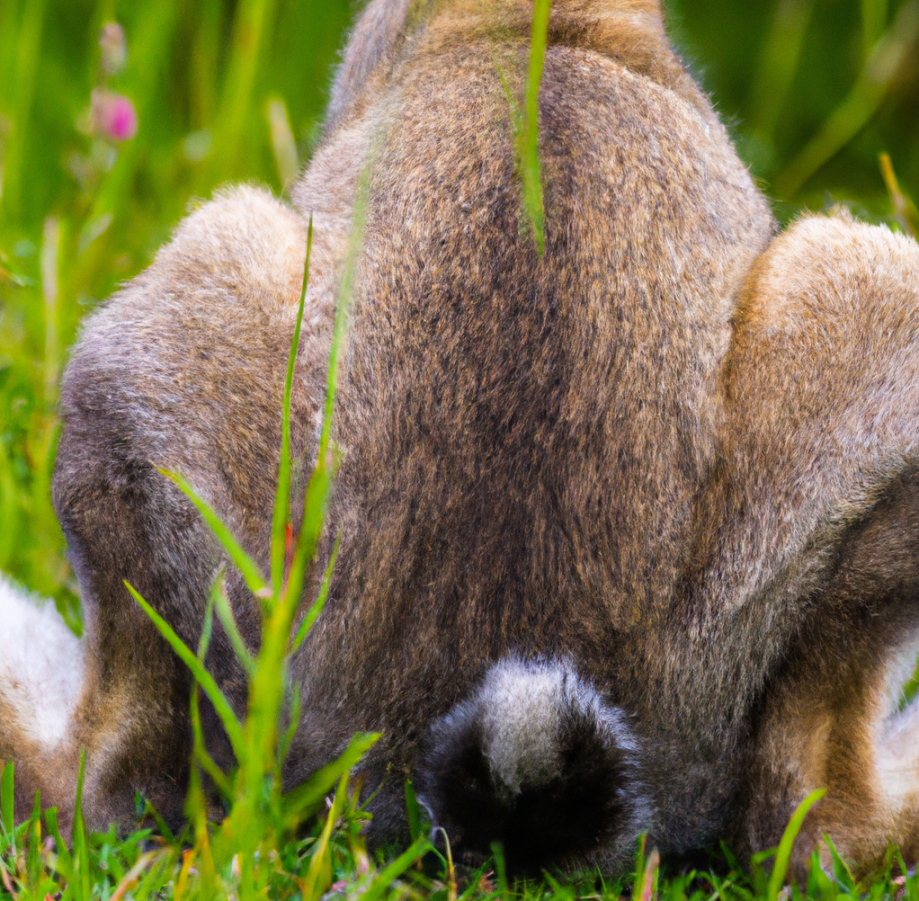What Causes Splayed Legs In Rabbits?
Rabbits are adorable and playful creatures that can bring joy to any household. However, like any other pet, they can develop health issues that require attention and care. One common problem that rabbits may experience is splayed legs, also known as spraddle legs or splay legs. This condition affects the rabbit’s ability to walk or hop properly, causing its legs to appear stretched out at odd angles. Understanding the causes of splayed legs in rabbits can help owners take the necessary steps to prevent or manage this condition.

1. Birth Defects or Genetic Factors
Some rabbits are born with splayed legs due to birth defects or genetic factors. This means that the condition is present from birth and may be inherited from the parents. Improper development of the bones, muscles, or tendons can lead to splayed legs in rabbits. This is why it is important to obtain rabbits from reputable breeders who take steps to ensure the health and well-being of their animals.
2. Improper Nutrition
Nutrition plays a crucial role in the overall health of rabbits, including the development of their bones and muscles. A diet that lacks essential nutrients, such as vitamins and minerals, can lead to weak bones and muscles, increasing the risk of splayed legs. It is important to provide rabbits with a balanced diet that includes high-quality hay, fresh vegetables, and a limited amount of pellets. Consulting with a veterinarian can help ensure that the rabbit’s nutritional needs are being met.
3. Trauma or Injury
Rabbits are curious and active animals that love to explore their surroundings. Unfortunately, this can sometimes lead to accidents or injuries that affect their legs. Trauma or injury to the legs can cause splayed legs in rabbits. It is important to create a safe environment for rabbits to minimize the risk of accidents. Providing them with a spacious and well-maintained enclosure can help prevent falls or other incidents that can lead to leg injuries.
4. Incorrect Housing or Flooring
The housing and flooring of a rabbit’s enclosure can also contribute to the development of splayed legs. Wire-bottomed cages or slippery surfaces can make it difficult for rabbits to grip and maintain proper leg positioning. This can lead to splayed legs over time. It is important to provide rabbits with a suitable living space that includes solid flooring or non-slip surfaces to prevent this condition.
5. Rapid Growth
Rabbits, especially young ones, can experience rapid growth spurts. During these growth periods, the bones and muscles may not develop at the same rate, leading to splayed legs. It is crucial to provide young rabbits with a balanced diet and monitor their growth to ensure they are developing properly. Consulting with a veterinarian can help determine the appropriate diet and feeding schedule for young rabbits.
Frequently Asked Questions (FAQs)
1. Can splayed legs in rabbits be fixed?
Yes, splayed legs in rabbits can often be corrected if detected early. Treatment may include physical therapy, splints, or braces to realign the legs. However, the success of treatment depends on the severity of the condition and the underlying cause. Consulting with a veterinarian is essential for proper diagnosis and treatment.
2. Can splayed legs in rabbits be prevented?
Yes, splayed legs can be prevented in rabbits. Providing a balanced diet, suitable housing and flooring, and minimizing the risk of trauma or injury can help reduce the likelihood of splayed legs. Choosing rabbits from reputable breeders who prioritize the health of their animals can also minimize the risk of genetic factors contributing to this condition.
3. Can rabbits with splayed legs live a normal life?
Rabbits with splayed legs can still lead fulfilling lives with proper care and management. While their mobility may be affected, they can still move around, eat, and interact with their environment. It is important to provide them with a comfortable and safe living space, along with any necessary medical treatment or assistance devices recommended by a veterinarian.
4. Can splayed legs in rabbits be hereditary?
Yes, splayed legs can be hereditary in rabbits. If a rabbit has splayed legs, there is a possibility that their offspring may inherit the condition. It is crucial to obtain rabbits from reputable breeders who prioritize breeding healthy and genetically sound animals to minimize the risk of hereditary splayed legs.
Splayed legs in rabbits can be distressing for both the owners and the affected rabbit. However, with proper care, prevention, and treatment, rabbits with splayed legs can still lead happy and fulfilling lives. It is important to consult with a veterinarian for a proper diagnosis and to develop a suitable treatment plan based on the individual rabbit’s needs.
Related Articles…
Copyright Notice:
This website utilizes images found online, all copyrights are retained by their original owners. If you would like an image removed, kindly contact us.